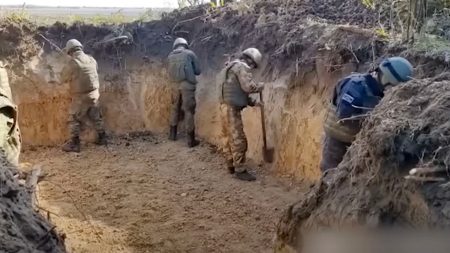Axel Rudakubana, a 17-year-old at the time of his arrest, was found to possess a disturbing collection of materials related to violence, war, and terrorism on his electronic devices. A police search uncovered over 164,000 documents stored on two Lenovo tablets and a HP laptop, revealing a chilling preoccupation with atrocities and methods of inflicting harm. The breadth of this digital library encompassed historical accounts of violence, including information on Nazi Germany, the Sri Lankan civil war, and ethnic cleansing in Somalia. Furthermore, the collection extended to studies of violent practices in 17th and 18th century Native American cultures, encompassing themes of cannibalism and extreme brutality. This vast compilation of disturbing content painted a picture of a young man immersed in the darkest aspects of human history and conflict.
One particularly alarming aspect of Rudakubana’s digital library was its inclusion of materials directly related to terrorism and methods of killing. Among the documents discovered was “The myth of the remote-controlled car bomb,” which detailed the construction and deployment of such devices. Even more disturbing was the presence of “Military studies in the Jihad against Tyrants: The Al-Qaeda Training Manual,” a document providing explicit instructions on carrying out acts of terror. This manual, coupled with other materials, clearly demonstrated Rudakubana’s interest not only in the history of violence but also in its practical application. The fact that he left his family home with specific instructions from the manual regarding knife attacks heightened concerns about his potential for enacting real-world violence.
Adding to the chilling nature of the discovered materials was a document titled “Strong nitric acid,” a study on the chemical compound used by ISIS to dissolve 25 spies in 2016. This, combined with his interest in war and conflict, suggested a morbid fascination with extreme violence and its various forms. The sheer volume of disturbing content, coupled with its specific focus on methods of inflicting harm and carrying out terrorist attacks, painted a deeply concerning picture of a young man potentially radicalized and on a dangerous path. The materials recovered from his devices provided clear evidence of his obsession with violence and the methods used to perpetrate it.
Rudakubana’s background further complicates the narrative. His parents had fled Rwanda during the 1994 genocide, a horrific event that claimed the lives of nearly a million people in just 100 days. His father is believed to have fought with the Rwandan Patriotic Army against the Hutu-dominated regime. This personal history of displacement and violence, while not excusing his actions, adds another layer of complexity to understanding his motivations. It is impossible to know the extent to which this background influenced his morbid fascination with violence, but it provides a potential context for his interest in conflict and atrocity.
The extensive collection of violent material found on Rudakubana’s devices raised serious concerns about his potential for committing acts of violence. The combination of historical accounts of atrocities, manuals on terrorist tactics, and research into chemical weapons painted a picture of a young man with a deeply troubling obsession. The wiped browsing history on his laptop further suggested an attempt to conceal his activities, adding to the suspicion surrounding his intentions. The sheer volume and nature of the materials discovered warranted a thorough investigation into the potential threat he posed.
The investigation into Rudakubana’s activities highlighted the importance of monitoring online radicalization and the access individuals have to extremist materials. The vast amount of information available on the internet, including manuals and guides on carrying out acts of violence, poses a significant challenge to law enforcement agencies. Rudakubana’s case underscores the need for increased vigilance in identifying and addressing individuals who exhibit a fascination with violent extremism, especially when coupled with access to detailed instructions on carrying out attacks. This case serves as a stark reminder of the potential dangers lurking in the digital world and the importance of proactive measures to prevent online radicalization from translating into real-world violence.











